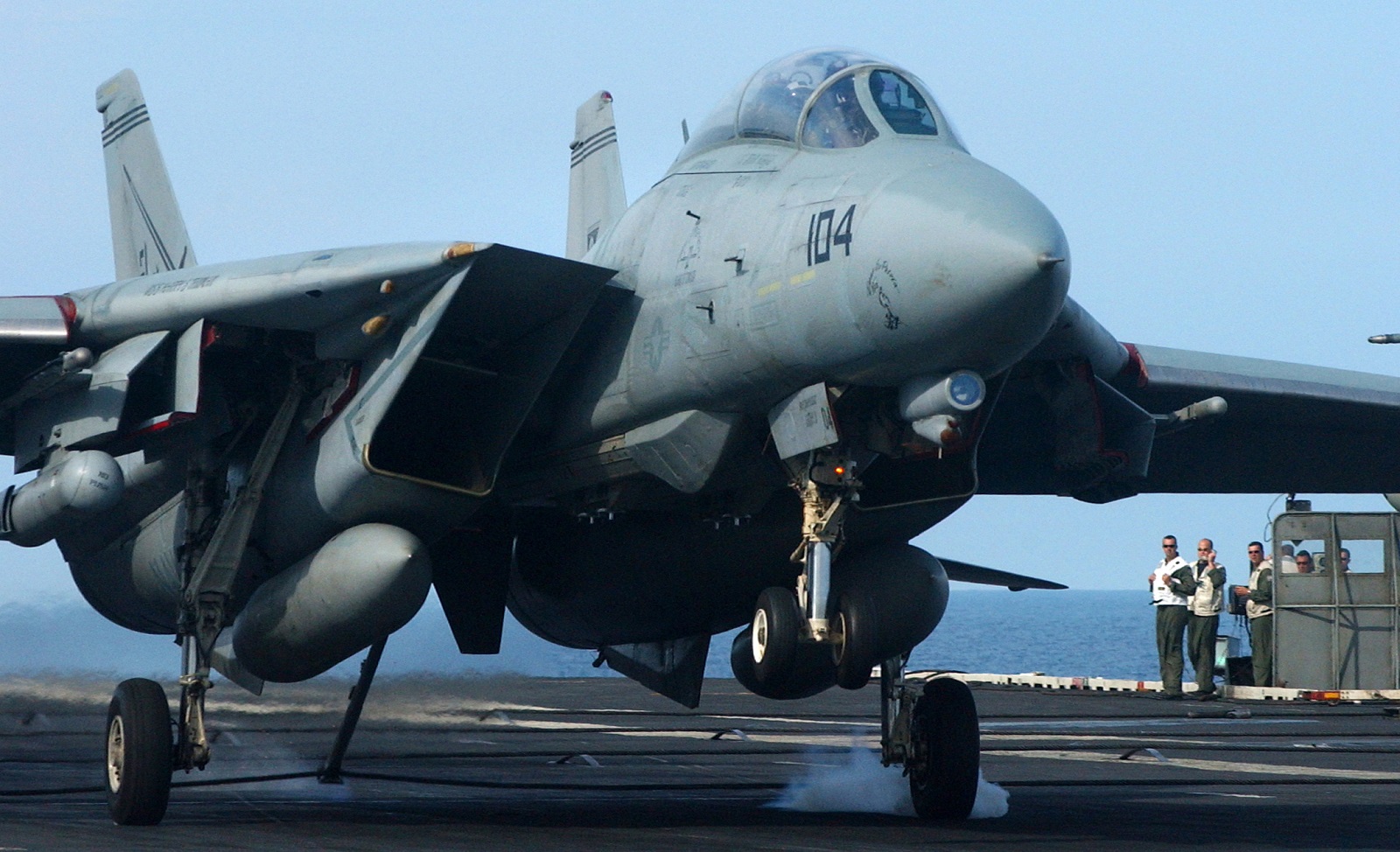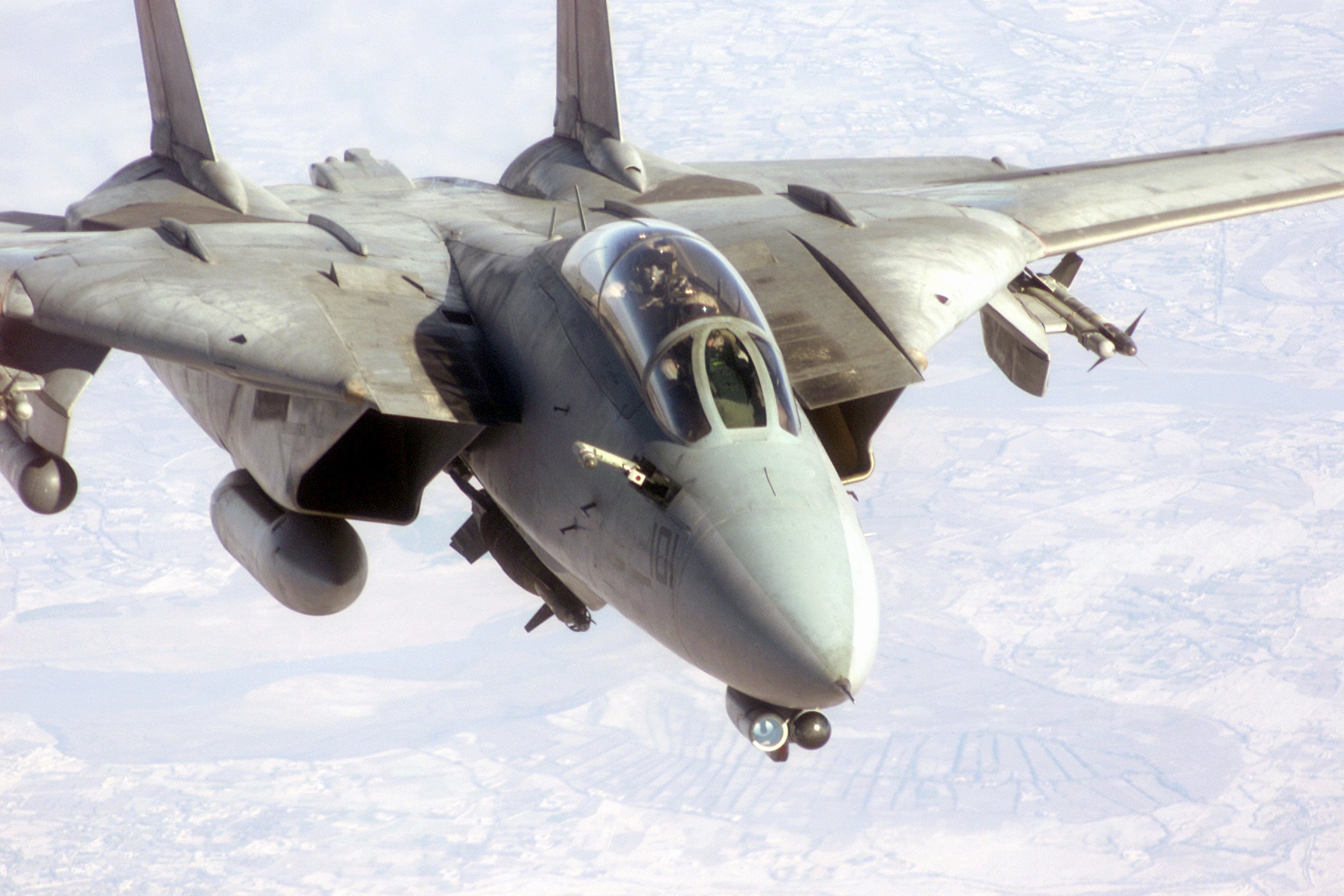F-14 Tomcat: Top-Gun Movie Star and Time-Tested Warplane
Designed to incorporate the air combat experience learned during the Vietnam War, the F-14 Tomcat was the first of the American "Teen Series" fighters that also included the F-15 Eagle, F-16 Fighting Falcon, and the F/A-18 Hornet – the latter seen in "Top Gun: Maverick."
For fans of the 1986 film "Top Gun," the real stars of the film weren't Tom Cruise or Val Kilmer – and perhaps the highlight of last year's "Top Gun: Maverick" wasn't even seeing Cruise pilot the hypersonic "Darkstar" in the opening sequence. No, in the original film, the star was the Grumman F-14 Tomcat, while the highlight of the sequel was seeing Maverick and Rooster (Miles Teller) take on the unnamed adversary's "fifth-generation" aircraft with an aging Tomcat.
Designed to incorporate the air combat experience learned during the Vietnam War, the F-14 was the first of the American "Teen Series" fighters that also included the F-15 Eagle, F-16 Fighting Falcon, and the F/A-18 Hornet – the latter seen in "Top Gun: Maverick."
During its three decades in service with the United States Navy the F-14 Tomcat has truly more than lived up to the role it was designed for, drawing blood in combat and even getting its moment in the spotlight in numerous movies including 1980s "The Final Countdown," and 1996's "Executive Decision."
The Cold War's Best Warbird
As noted by the Naval History and Heritage Command, during the Cold War in Soviet long-range patrol and bomber aircraft dictated a requirement for a fleet defense fighter that could engage high-altitude bombers from well beyond visual range.
"The iconic F-14 Tomcat was Grumman's answer."
The two-seat carrier-based multi-role fighter was developed after the United States Congress halted the development of the F-111B along with the Tactical Fighter Experimental (TFX) program. The goal of that program had been to supply both the United States Air Force and the United States Navy with the planes to fit each of their respective needs, but not surprisingly, Navy officials were opposed.
Instead, the U.S. Navy called for a request for proposals for its Naval Fighter Experimental (VFX) program, which required a tandem two-seat, twin-engine air-to-air fighter. The two primary competitors were McDonnell Douglas and Grumman – with the former evaluating a "naval" version of its F-15 Eagle.
Grumman instead proposed a variable-geometry, two-seat, twin-engined design built around the Hughes AWG-9 weapons system. The aerospace firm had gained considerable experience with "swing-wing" technology from its earlier XF10F Jaguar, which had been built only as a prototype. The need for rapid development and fielding of the aircraft dictated the adoption of Pratt & Whitney TF-30 turbofans similar to those used in the F-111.
The design from Grumman won out, and the company was awarded the contract in January 1969.
F-14 Grumman Was Cool For Cats
The aviation firm had a tradition of naming its aircraft after cats, beginning with the F4F Wildcat, but the F-14 was also "Tomcat" to partially honor U.S. Navy Admiral Thomas "Tomcat" Connelly who had called upon Congress for the Navy to develop a new carrier-based fighter.
The aircraft made its first flight in December, and after several changes following flight testing, it arrived as a supersonic, twin-engine, variable-sweep wing, two-seat fighter that was designed to engage enemy aircraft in all weather conditions as well as at night. With its variable-sweep wing, the F-14 was designed to match the speeds of other aircraft as needed – and for takeoff and low-speed flight, the wings would shift to the front, while for supersonic speeds the wings could tuck backward. Because of its versatility, it served as an air superiority fighter, fleet defense interceptor, and even tactical reconnaissance platform.

The F-14 was designed to track up to 24 targets simultaneously. The plane featured an advanced weapons system that included a powerful Hughes AWG-9 radar, which used in conjunction with the Phoenix AIM-54A missiles, can pick out and destroy a chosen target from a formation at a distance of over 100 miles. Additional armaments include a variety of other intercept missiles, rockets, bombs, and an internal M61A1 Vulcan 20mm Gatling-style rotary cannon.
Combat History
The first F-14As were delivered to the Navy in June 1972, with Fighter Squadron (VF) 124 designated to provide crew training.

Not counting the Japanese "Zero" that was "splashed" in the film "The Final Countdown," the Tomcat drew its first blood in August 1981 during the "Gulf of Sidra incident." A pair of F-14s came under attack from two Libyan Su-22 Fitters. Both Fitters were shot down, but the events would be replayed nearly eight years later when in January 1989 another pair of F-14s shot down two Libyan MiG-23 "Floggers" again over the Gulf of Sidra.

The United States Navy continued to rely on the combat-proven warbird throughout the 1990s and early 2000s, where it was utilized in strike escort and reconnaissance roles in Operation Desert Storm as well as in Operation Deliberate Force and Operation Allied Force in the conflicts in the former Yugoslavia.
The F-14's final combat mission took place in February 2006 when two Tomcats were used in a bombing mission in Iraq.
While the F-14 has been retired from service with the Navy, and supplanted by the Boeing F/A-18E/F Super Hornet, the Tomcat remains in use with the Islamic Republic of Iran Air Force. Those aircraft were purchased by the Imperial Iranian Air Force in the 1970s, and reportedly a handful remains in operation. For those reasons, the U.S. placed restrictions on the distribution of spare parts – going so far as to ban their export after the aircraft was retired by the U.S. Navy.
Yet a few Iranian Tomcats have even allegedly carried out escort missions in Syria – proving that even after nearly 50 years the Tomcat still has sharp claws.
Author Experience and Expertise
A Senior Editor for 19FortyFive, Peter Suciu is a Michigan-based writer. He has contributed to more than four dozen magazines, newspapers, and websites with over 3,200 published pieces over a twenty-year career in journalism. He regularly writes about military hardware, firearms history, cybersecurity, politics, and international affairs. Peter is also a Contributing Writer for Forbes and Clearance Jobs. You can follow him on Twitter: @PeterSuciu.
All Images are Creative Commons.


